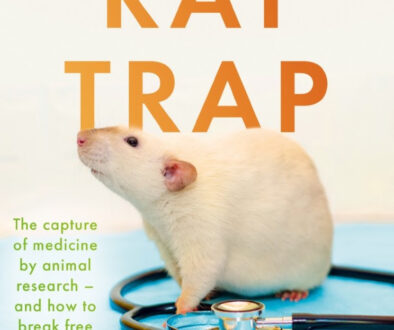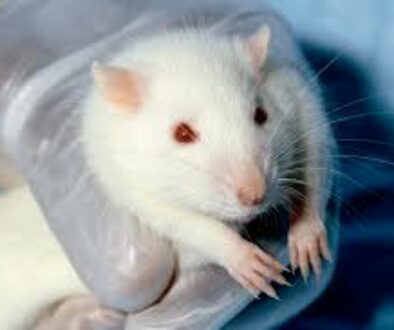Setting the record straight on cosmetics testing
Andre Menache BSc(Hons) BVSc Dip ECAWBM (AWSEL) MRCVS
Summary
EU law requires as many as eleven toxicity tests for cosmetic products to be marketed, for which there are only four animal-free tests currently available. So our question is: are animals used in the other seven tests? Since animal testing for cosmetics is officially banned, cosmetics manufacturers exploit terminology loopholes to get their required missing data. Most substances in cosmetics are industrial chemicals (which are normally all tested on animals under REACH* regulations), so these chemicals categorised with dual (cosmetics and other industrial) use can still be tested on animals. The cosmetics industry is actually using animal testing under a different legal guise.
*REACH is the EU regulation for: Registration, Evaluation, Authorisation and restriction of CHemicals.
Historical timeline
- Animal rights activist Henry Spira places a full-page advertisement in 1980 in The New York Times with the caption, « How many rabbits does Revlon blind for beauty’s sake? » (1).
- Within a year, Revlon donates $750,000 to a fund to investigate alternatives to animal testing, followed by substantial donations from Avon, Bristol Meyers, Estée Lauder, Max Factor, Chanel, and Mary Kay Cosmetics, donations that led to the creation of the Centre for Alternatives to Animal Testing in the USA (1).
- Council Directive 76/768/EEC of 1976 relating to cosmetic products comes into force in the European Union (2).
- The 7th amendment of the Cosmetics Directive of 1976 prohibits the testing of finished cosmetic products on animals by 2004 and prohibits the testing of cosmetic ingredients on animals by 2009 (2).
- REACH is the European Regulation on Registration, Evaluation, Authorisation and Restriction of Chemicals. It entered into force in 2007, replacing the former legislative framework for chemicals in the EU (3).
- EU law requires as many as eleven toxicity tests for cosmetic products to be marketed, for which there are only four animal-free tests currently available (4). So our question is: are animals used in the other seven tests? Since animal testing for cosmetics is officially banned, cosmetics manufacturers exploit terminology loopholes
to get their required missing data. Most substances in cosmetics are industrial chemicals (which are normally all tested on animals under REACH regulations), so these chemicals categorised with dual (cosmetics and other industrial) use can still be tested on animals. The cosmetics industry is actually using animal testing under a
different legal guise. - The use of animal tests is even allowed under the Cosmetics directives under some circumstances, for example, to fulfil health and safety requirements for workers in the cosmetics industry (5).
- Based on figures published by the European Commission, the number of animal lives spared every year as a result of the Cosmetics Directive is around 5000. This figure represents less than half of one per cent of the roughly 12 million animals used in experiments in the EU annually (6, 7).
References
1. https://en.wikipedia.org/wiki/Henry_Spira
2. https://en.wikipedia.org/wiki/Cosmetics_Directive
3. https://ec.europa.eu/growth/sectors/chemicals/reach_en
4. https://www.cosmeticseurope.eu/files/1215/0245/3923/Non-animal_approaches_to_safety_assessment_of_cosmetic_products.pdf
5. https://echa.europa.eu/documents/10162/13628/reach_cosmetics_factsheet_en.pdf
6. http://www.vier-voeters.nl/files/the_Netherlands/campagnes/proefdieren/factsheet_laboratory_animals.pdf
7. http://eur-lex.europa.eu/legal-content/EN/TXT/PDF/?uri=CELEX:52007DC0675&from=EN



